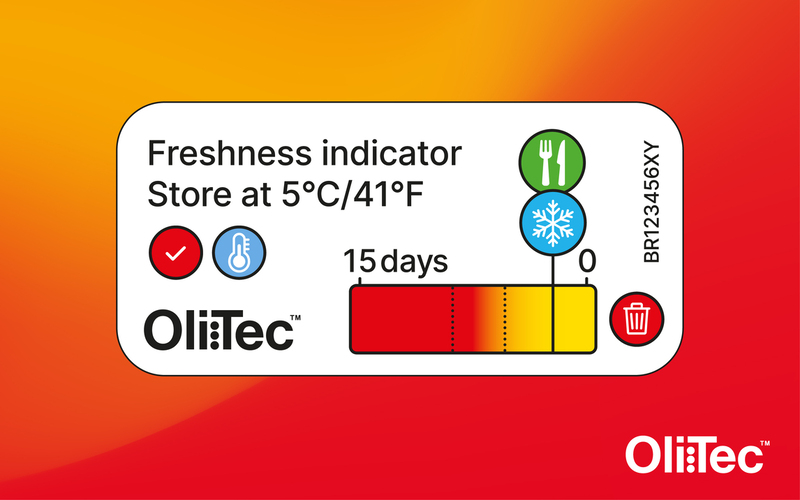Smart label technology solving problems of monitoring shelf life


The smart labels can be applied to any product with a shelf life of between five and 15 days and are made from standard recyclable label stock materials.
Image: OliTec
Oli-Tec has developed a new smart label technology for products that are temperature as well as time sensitive.
Oli-Tec — an intelligent label technology that mirrors the decay cycle of the product being labelled — produces smart labels that can be applied to any product with a shelf life of between five and 15 days.
According to the firm, the labels are superior to traditional labels because they feature an “integrated, technologically advanced visual indicator that is sensitive to time and temperature”. It gradually transitions from yellow to red, changing more slowly in cool temperatures and more quickly in warm conditions — both at predictable, repeatable rates. This simple colour changing indicator provides a clear, highly visible “call to action” that both retailers and consumers can understand at a glance.
The time and temperature sensitive Oli-Tec technology can be tailored to whichever product is being labelled, using customisable expiration periods and personalised graphics. The labels are made from standard recyclable label stock materials and can be activated and automatically applied using traditional high speed label applicators.
The introduction of Oli-Tec time and temperature sensitive smart labelling is also timely because currently one third of all food produced globally goes to waste, and this food waste generates 10% of the world’s greenhouse gases. I
Oli-Tec supports the smart labels’ capabilities with a study conducted in Denmark that demonstrates the use of smart labels reduced in-store food waste by 20%. It is believed that similar reductions could be achieved in consumers’ homes if they had smart labels with a “call to action” visual indicator instead of having to rely on labels carrying “use by” or “best before” dates.
Nik Richardson, CEO of Oli-Tec said the label technology was developed with converters, retailers and consumers in mind.
“We wanted to make it a technology that is easy to integrate into the complex processes in the supply chain and in-store, so each label could play some part in reducing waste,” Richardson said. “We have also strived to develop a simple visual indicator that will help consumers to see when food is going off. They can then decide whether to use it, freeze it or cook it.”
Related content
Source: foodanddrinktechnology.com

